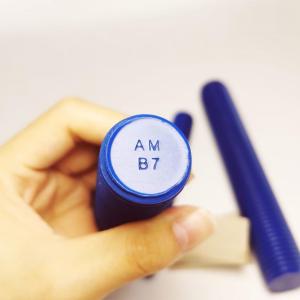Bolt, High strength bolts, Screw

Automatic bolt loosening - impact, vibration, dynamic load
Relaxation settlement, creep, relaxation To prevent spontaneous loosening, it is necessary to eliminate sliding between connecting components or at least lower it below the critical level. This can be achieved by increasing axial tension, increasing friction between clamping components, or reducing cyclic loads, such as impact, vibration, or cyclic thermal loads. Another common method is to increase friction between bolts and threads. There are many solutions that can achieve this. Although some of them are effective, they also have their drawbacks. Glue or adhesive can be an effective method based on friction, but when it comes to disassembling and disassembling bolts, dry adhesive may cause problems. In addition, increasing friction between threads will reduce the preload that can be achieved at a specific torque level. Locking is a commonly used method in the aviation industry. Fatigue is the permanent damage or deformation of bolts and clamping components. This is due to the loss of preload leading to joint opening. There are two basic mechanisms for losing preload - spontaneous loosening and relaxation. When bolts become loose due to impact, vibration, or dynamic loads, they will either loosen spontaneously or automatically. Even a slight rotation is sufficient to cause the bolted connection to lose all its preload. This is the most common cause of loose bolts. Relaxation is caused by three mechanisms: settlement, creep, and relaxation. In recent years, with the increasing demand for many bolted connections and the use of lightweight materials, it has become increasingly important. It is important not only to pay attention to the tensile strength of the bolt, but also to ignore other parameters such as elasticity and stiffness, which are also important. There are usually multiple options to design better bolted connections based on the bolt and application, as well as the reasons for preload losses. Under thermal load, the joint can be optimized by selecting materials with the same thermal expansion coefficient. To reduce settlement, maintaining a high preload during operation can reduce the roughness between the contact surfaces. The diameter of fine holes or toothed surfaces can help reduce relative displacement A good bolted connection consists of a very elastic bolt and a very hard clamping component, and there are different methods to achieve this. One method of improving bolts with elasticity is to have a long clamping length. But if you have a flange and the clamping length cannot be too long, you can use more but smaller bolts to change the design. Therefore, using ten smaller bolts instead of five will create a more flexible joint. [ Generally speaking, to achieve optimal bolted connections, multiple variables and design options need to be considered.



